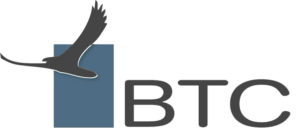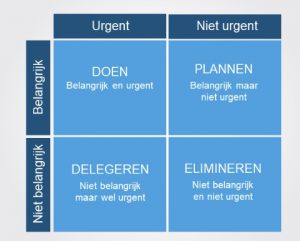The myth of being professional
“Oh, I’m just fine.”
When we ask how one is doing, this is often the cliché answer. However, most times it is a facade.
Feelings of frustration exist but they are not openly addressed or even actively suppressed.
Having been active in corporate environments for almost 20 years in the role as trainer intervening in teams and coaching professionals one-on-one, I come across this kind of masquerade frequently.
Being professional seems to be:
Be strong!
Do not show your emotions!
Be ready.
Know everything.
Be in control!
The corporate acting of ‘we are doing fine’ (while in fact they are not) breeds stress, distrust and is killing innovation and cooperation. In the end hurting the bottom line.
As a coach I get a call when this is clearly not working. For example when a team is underperforming. Or when a specialist is promoted to a new level of leadership and needs development of his/her people skills. In these cases it is acknowledged that an impartial outsider will be of help. People involved experience the downside of their counterproductive behaviors and communication. Natural tendency is to put blame outside themselves. They are in the dark how to do or behave differently.
“Vulnerability is weak” as the underlying believe, seems predominant in most corporate cultures.
Emotions are there to be managed.
Authentic behavior is censored.
Communication is filtered.
But what happens?
- When sincere feedback in a team is being given?
- When authentic communication is being stimulated?
- When people get the time to reflect in all honesty on their own (professional) lives?
- When ownership is being taken and responsibility is embraced?
- When someone stops running with the handbrakes on?
When one becomes free of their judgments?
The following two cases are examples taken out of my coaching practice:
Case 1) The team wanting to become more effective
The request: We need to get our team aligned urgently or we will not reach the targets set. The international management team has two new people, who have been recently promoted into this team. These two do not like the management aspect of their new role and they seem to be not good at it. In their opinions discussing strategically and long term is seen as a waste of time and they dislike the inefficiency of the process. Moreover, they feel it is taking them off the ‘real work’ they have to do.
Before the intervention this was unknown to the rest of the team and not even completely clear for the two people themselves. They felt that is was unsafe to state their doubts in the group. On top of that first being promoted and later acknowledging that you do not like your management role, calls for realistic self-reflection.
Looking in the mirror with brutal honesty and step over our dented ego.
Deal with the fear of rejection: “What might others think of me?”.
For most of us it is not easy to be open about our doubts and fears. Especially in a corporate company with high standards on so called ‘professionalism’ and strive for upward development.
This led to team meetings where people felt disengagement and increased frustration. There was a lack of commitment and follow-up on decisions taken. As long as these personal issues were not addressed, the discussions kept going off the rails and trust was being broken again and again.
The solution: a bespoke program of team off-sites and individual training over a period of 8 months. In the teambuildings – as part of the program – we created a safe environment in which all team members could openly address their doubts and desires. Making the team aware that mastering conflict and disagreement is instrumental to growth as the team. Making all team members aware that upholding the professional image of ‘being in control, or knowing it all’ is a façade, a mask many people are hiding behind. Learning how to give each other constructive feedback and deal with conflicts. Providing them with the experience of just being with some one who is open and vulnerable. Listening to each other’s doubts, mistakes and life events and build on the bonding that creates. Helping them see that immediate advice can be counterproductive. Helping them see that individual judgements limit true cooperation. Providing them with crystal clear objectives, tasks and a communication structure. Liberating them from forms of self-doubt.
The result: the team manager said : “We have taken a big step in becoming a high performing team. Roeland’s style of leadership through the meetings was insightful. He was not afraid to address the key difficult issues and hold a mirror up to our discussions. We still reference on how much we learnt of each other as individuals and continue to build on this program.”
A team member about the personal development training ‘Momentum’: ”I recommend it to anyone who wants to unlock their potential.”
Are you curious to see how your own team performs against high-performing teams? We developed a free team benchmark, which you can find here. The test takes 5 minutes and provides you with clear direction for your team growth.
Case 2) The leader wanting to become more impactful.
A leader wants to become more effective in dealing with his international team. It turns out that the request for coaching was caused by the lack of progress one person in the team seemed to make. When probed in the coaching session, the leader shouted out in anger “This person just does not want to change! I have tried everything!”.
The solution: make him aware of his deeper drives of his own behavior and communication. Make him see the power of acknowledging his/her own responsibility in creating the difficult behavior. Making him see the prices he pays in his personal and professional life as a result of his ‘wanting to be right’. Provide him with deep insight on his reasons why he is so action oriented and rational. Provide clarity in his sense of being out of control, especially when feelings are involved. Putting him back in the driver seat of his own thoughts and feelings. Let him experience the deep sense of empathy with others and himself and going through the liberating effects. Provide him with the tools to sustain his learnings and develop a culture in his team, where people really grow and new leaders can arise.
The result: a professional human being; more open, funny and effective. And a father who spends more time with his wife and kids and lives a healthier life. Resulting in being a more effective leader.
My own lesson.
More than 15 years ago I got my own feedback. I took part in a personal development training. Part of my learning goal was to develop my ability to provide direct and confrontational feedback to my trainees. I knew I was good at connecting and inspiring the flame of energy in others. I thought I needed to learn to be tough. I drew the drawing below representing my learning goal, whereby the hammer represented the ‘toughness’, the bubble my professional image, and my heart my flame to inspire others. The experienced senior trainer saw through me; he said: “The only thing you have to learn, is that your heart is your hammer.”
I couldn’t understand it fully then, or I was scared to apply it. It took 10 years to really understand. I know now it is the key to everything.
Do you know your pitfalls of upholding the image of being the ‘good professional or manager’?
Do you believe that you could be more heart driven in your (business) life?
Here are 10 tips to go beyond your professional image in your life and help others letting go of it:
1- Ask how people are doing. Take the time to get beyond the superficial answer ‘Oh, I’m doing just fine”. Listen. Dig deeper than normal. Delay your judgement. Have a sincere interest in the other person.
2- Start growing to become comfortable with the discomfort of being with someone who is emotional. Delay your advice. Be emphatic. How? Watch this video in which empathy is beautifully explained in 2,5 minutes.
3- Express your own feelings. Be open about your own mistakes and doubts (even when this is scary). Especially if you are in a leadership role.
4- Develop your EQ fitness. Develop your sensitivity and expand your emotional vocabulary. Focus on the subtleties in emotional expression of others and yourself. In other words, become more fit in giving words to feelings.
5- Actively give compliments.
6- When in a confrontation, stop arguing and making your point and actively ask yourself: “What is the other seeing that I might be missing?”
7- Evaluate every meeting you have and ask for feedback. Ask through when you notice an emotional response within yourself.
8- Ask your partner for honest advice: he or she will know…
9- Ask yourself often: What is my part in this situation and what can I do differently?
10- Walk in nature more often. The oxygen flow and movement allows your brain to digest what you have been experiencing. You become more attentive and happier afterwards. You think this is fluffy new age stuff? Read the scientific proof here.





